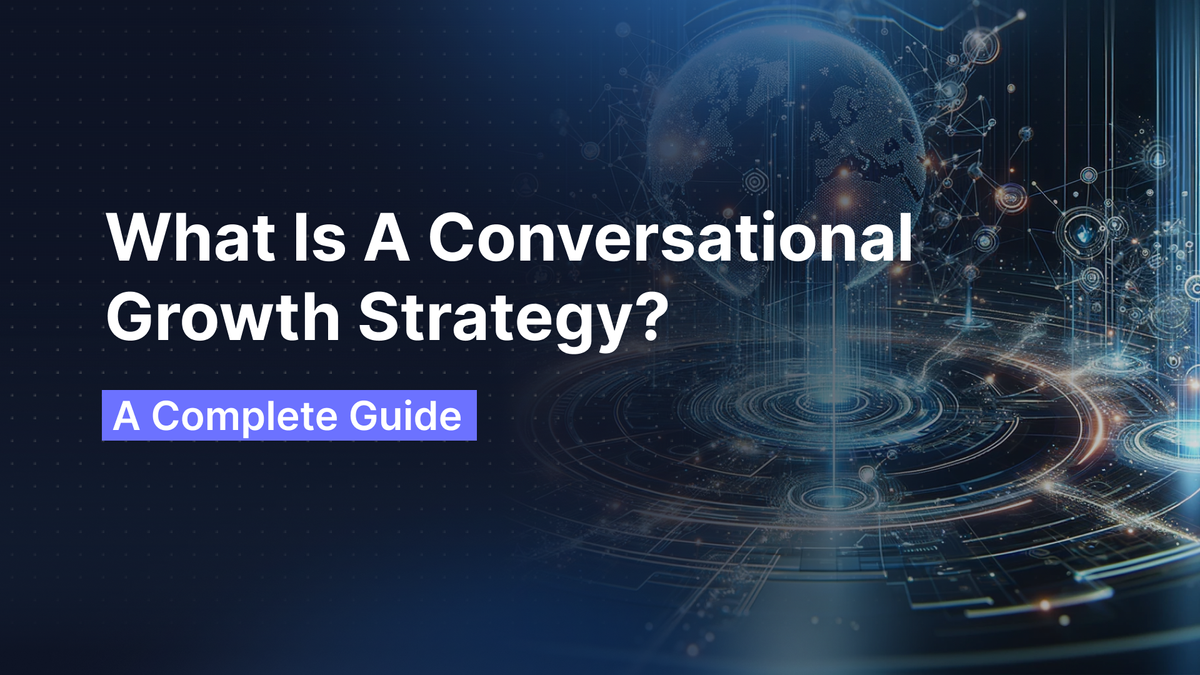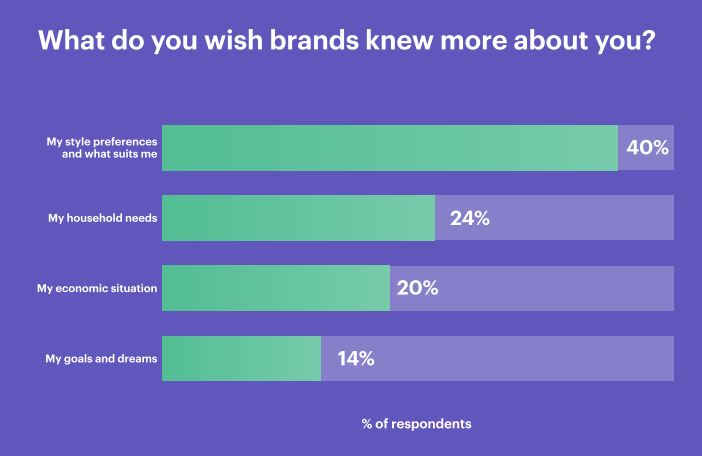Conversational growth strategy can play a key role in growing your business. ...

Businesses are constantly seeking new ways to connect with their audience and build long-lasting relationships. Conversational growth strategies are an effective approach that lets you engage with your audience, drive better conversion, and improve customer retention.
Research shows that 80% of customers are more likely to make purchases with brands that offer personalized experiences. This shows that customers want businesses to understand their preferences, concerns, and pain points before they make a decision. Unlike traditional marketing methods, conversational approaches utilize AI support to empathize with customers, deliver personalized experiences, and boost business growth.
Let’s see what is a conversational growth strategy and how you can effectively implement it in your business.
A conversational growth strategy refers to the use of two-way communication to drive engagement and business growth. It focuses on engaging your audience in meaningful conversations that help build strong relationships and eventually turn them into loyal customers.
When a customer reaches out to your brand, conversational growth strategies help you to understand their needs and respond in a personalized way. They enable you to deliver relevant information to the customers that create a positive perception of your brand and encourage customers to come back for future interactions.
It revolves around the use of AI chatbots and conversational AI apps to engage with customers in real-time conversations. It's all about delivering the right message to the right person at the right time.
Conversational growth strategies improve the performance of sales, marketing, lead generation, and customer support. Above all, they help you create a seamless customer experience towards the sales funnel. Let's look at some of the major reasons why it is good to have a conversational growth strategy for your business.
People nowadays have a shorter attention span than a goldfish. This means, you have only 7 seconds to grab the customer’s attention or else they will leave the conversation. While browsing through your website, users may find it difficult to find relevant details such as product features, price, or payment methods, the use of conversational applications answers all customer queries on a single platform and helps them make a quick buying decision.
For example, if a customer is unsure about which dress size is right for them, they can quickly chat with a representative and clear their doubts. Similarly, a chatbot on a travel website can ask a buyer about their preferred destinations and help them design a tailored vacation plan.
A conversation between two people is the most natural way to connect and communicate. We all meet with people and end up sharing our personal information (name, email, interests) without even realizing it. This may look like a very unimportant detail in everyday life but could be the most valuable asset for a business. Let's understand this with an example:
More than 80 percent of businesses are using first-party (authentic) customer data to personalize customer experience. This can help you achieve higher engagements and more conversions.

At the end, the conversations are all about building 1:1 relations with people. We learn more when we interact and exchange ideas with each other. A conversational approach in business communication breaks the barriers and builds authentic relationships with your audience. It helps you understand customers' behavior better and provide immediate support to them.
The use of conversational apps e.g. AI chatbots enable you to provide proactive support to your customers and collect valuable insights about their experience. It helps customers feel valued and supported which eventually leads to increased satisfaction and strong relationships with your brand.
As you know the value of conversational growth for your business, let's see how you can design and implement successful strategies for your business.
Who are your customers? What do they want and how do they see the world? The better you understand your target audience, the better you will be able to connect with them. Here are some essential elements to consider before designing a conversational growth strategy:
Using multiple communication channels helps you reach a wider audience and cater to their preferred interaction style. Here is how you can utilize websites, emails, and social media messaging for conversational growth:
More than 71% of customers prefer real-time communication with online services. Customers are more likely to feel confident in their decisions when they can directly interact with a brand and receive consistent support for their issues. Make sure to actively engage with your customers at each stage of the customer journey.
If a customer books an appointment, guide them about the available time slots and send gentle reminders to avoid missing appointments. Once a customer places an online order, send automated updates about confirmation, delivery status, or even flight confirmation (for travel companies) to stay connected with customers.
Similarly, if a customer wants to return or exchange a product, help them with the initial process and guide them toward the nearest store.
AI chatbots help you collect relevant and valuable customer details. This data can be used to create targeted marketing campaigns and personalized marketing content for your customers. According to research, more than 40% of customers want brands to personalize their interactions as per customers' preferences. Here are some key strategies:

After designing and implementing a conversational growth strategy, monitor key metrics to evaluate your performance. Check response rates, click-through rates, and dwell time in conversations to see how well your content is performing.
Conduct regular customer feedback through surveys, questions, and direct conversations with customers. This will help you identify areas of improvement and optimize your conversational growth strategies.
Conversation growth strategies utilize dialogue and active communication to engage with your audience and provide a personalized customer experience. By understanding your target audience, and employing different communication channels such as AI support and chatbots, you can create a seamless customer journey, collect valuable data and provide an unparalleled customer experience.
Build your own conversational growth strategy with Aidbase. Our AI chatbot customer support helps you provide 24/7 support and stay connected with your customers.